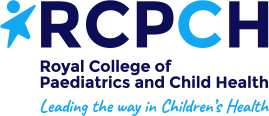Looking After Autistic Children's Teeth
We all want our children to grow up with healthy, happy smiles. If your child is autistic or has other additional needs, looking after their teeth may come with extra challenges.
Some children may experience:
- Sensory sensitivities such as disliking the taste, smell or texture of toothpaste, the feel of a toothbrush, or the noise of brushing.
- Strong food preferences or limited diets, which may include sweet foods that can increase the risk of tooth decay.
- Changes in routine that can make it harder to add new habits like brushing twice a day.
- Anxiety or discomfort in unfamiliar places, such as dental clinics.
These challenges can make brushing teeth, eating less sugar, or visiting the dentist feel overwhelming at times. But small steps and the right support can make a big difference.
Below is a video from the toothPASTE website about the toothbrushing experiences of autistic children, as described by parents and professionals.
The toothPASTE website is free to use and was created with families of autistic children. It includes practical support and many of the ideas are helpful for older children and those with other additional needs too.
The website focuses on three key habits to keep your child’s teeth healthy:
- Tooth brushing with fluoride toothpaste.
- Eating fewer sugary snacks and drinks.
- Visiting the dentist regularly.
It’s okay if starting these habits feels difficult at first. Changes don’t have to happen all at once. Small steps, based on what your child shows through their expressions, needs, and choices, can help.
Why baby teeth matter
Before you explore the tips below, we recommend reading the advice on the Oral Health for Children 3 and Older page.
It explains:
- Why baby teeth are important.
- How to brush your child’s teeth.
- Healthy food and drink choices.
- How to prepare for dental visits.

Top tips from the toothPASTE team
Here are some simple ideas to help with brushing, eating and drinking, and going to the dentist. These are based on what many families have found helpful. You’ll find more detailed step by step guides, short videos, and printable tools on the toothPASTE website.
Toothbrushing with fluoride toothpaste
Brushing twice a day with fluoride toothpaste helps protect teeth and prevent tooth decay. The most important time to brush is just before bed. Try to add one more brushing time during the day that fits your routine.
If brushing is difficult, you could try:
- Gently wiping a small amount of fluoride toothpaste onto your child’s teeth with your finger or a clean, damp, soft cloth.
- Using unflavoured, low-foam or mild toothpaste that feels more comfortable.
- Using a toothbrush with softer bristles, which can be gentler on sensitive mouths.
- Brushing in a different room some children prefer brushing in their bedroom, living room or wherever they feel most relaxed.
You can find examples of sensory-friendly toothbrushes and toothpastes, plus tips on how to introduce them and make the environment calmer (for example, turning off bright lights or playing soft music) on the toothPASTE website.

Reducing sugary foods and drinks
Many children with additional needs have strong preferences for certain foods or textures. Sweet foods may feel safe or comforting. that’s okay. You can still make small changes to protect their teeth.
Try to:
- Avoid sugary food and drinks in the hour before bed or overnight.
- Offer milk or water between meals.
- Have sweet things as part of mealtimes rather than as separate snacks.
You can find ideas for reducing sugar, food swaps, and tips for supporting children with strong food preferences, for example, offering new foods alongside familiar ones, on the toothPASTE website.

Visiting the dentist regularly
Going to the dentist can be challenging for some children, especially if they find new places, noises, or changes in routine overwhelming. Starting early and building up slowly can help.
Here are some ideas to make dental visits a little easier:
- Call the dental practice in advance to explain what helps your child. Let them know what you’re working towards. This could be a full check-up or simply a short visit to help your child get used to the setting.
You can also ask if it’s possible to:
- Book an appointment at a quieter time of day.
- Visit beforehand to have a look around.
- Skip the waiting room if that helps your child stay calm (for example, wait in the car until it’s your turn).
- Bring a comfort item such as a toy, blanket, headphones or anything that helps your child feel safe.
- Share a dental passport with the dental team so they understand your child’s needs. You can find one here
Dental care is free for children under 18 (or under 19 in full time education). Dentists can also apply fluoride varnish to protect your child’s teeth.
You can find more questions to ask, plus videos and printable tools to help prepare your child before, during and after the appointment on the toothPASTE website.




